 Have you been thinking about adding or improving an outdoor space in your landscape? Perhaps you imagine hanging out with friends on a warm summer evening. Or grilling a meal and eating it outdoors with your family. Or listening to the birds while you enjoy a book and a cold drink in your yard. It can be hard to move from an idea to a finished project that meets your needs.
Have you been thinking about adding or improving an outdoor space in your landscape? Perhaps you imagine hanging out with friends on a warm summer evening. Or grilling a meal and eating it outdoors with your family. Or listening to the birds while you enjoy a book and a cold drink in your yard. It can be hard to move from an idea to a finished project that meets your needs.
An intriguing book called A Pattern Language offers practical principles for creating living spaces that work for people. The architect Christopher Alexander and some of his colleagues wrote and published the book in 1977. It has become a classic because its ideas about designing towns and buildings are timeless.
Here are a few of the pattern concepts that apply to outdoor living spaces.
Positive space
Positive space is key to creating a welcoming outdoor space, according to A Pattern Language. “An outdoor space is positive when it has a distinct and definite shape, as definite as the shape of a room, and when its shape is as important as the shapes of the buildings which surround it.” In contrast, a negative space is shapeless, “vague, amorphous, ‘nothing.'”
If a space is positive, people feel comfortable in it and will use it. They tend not to use negative spaces. To create a positive space, give it some enclosure, such as trees, hedges, fences, a trellised walkway or a building wing.
Here are two examples of positive spaces from In Harmony-designed landscapes, one using fences and the second using stone walls and plantings.
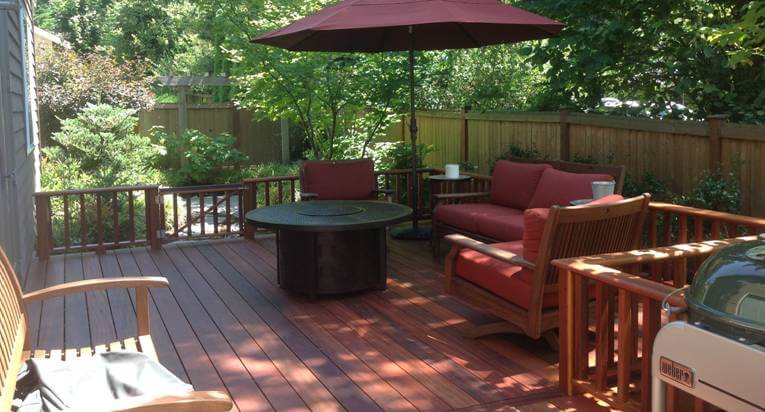
This design uses fences and the house’s wall to creative a positive space.
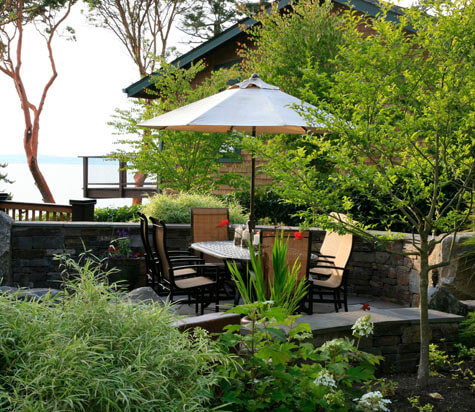
The low stone walls and plantings create a positive space and provide a sense of privacy and refuge.
Outdoor room
Positive space could be an actual outdoor room: “a partly enclosed space, outdoors, but enough like a room so that people behave there as they do in rooms, but with the added beauties of the sun, and wind, and smells, and rustling leaves, and crickets.” The room should be closely connected with the house to form an extended living area.
Alexander suggests that the outdoor room does not need a roof. In our rainy climate, adding a roof can increase the amount of time during the year that the outdoor room is used.
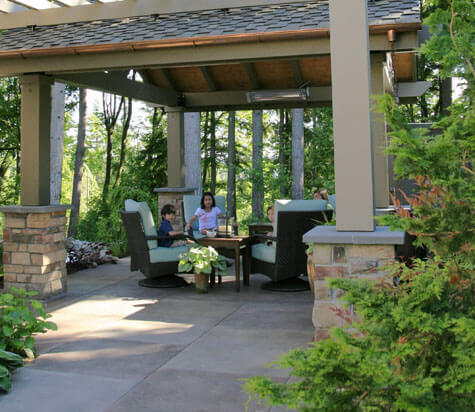
In Harmony designed this outdoor room (and landscape) for children to play and for parents to entertain guests.
Fire
“There is no substitute for fire,” said Alexander. “The need for fire is almost as fundamental as the need for water. Fire is an emotional touchstone, comparable to trees, other people, a house, the sky.”
Alexander suggests building the fire in a common space to provide “a natural focus for talk and dreams and thought.” He suggests a location that “knits together the social spaces and rooms around it, giving them each a glimpse of the fire.” He suggests the space should have another focus or visual interest to sustain it when the fire is unlit.
Here are two In Harmony-designed fire areas: an informal space and a more formal one.
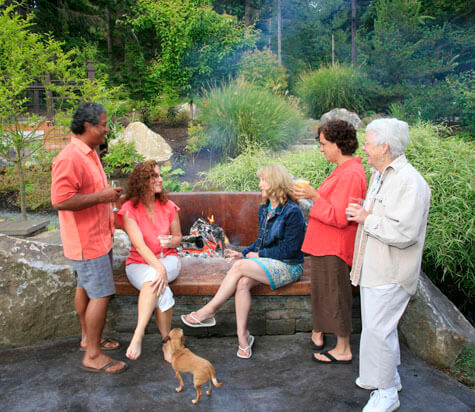
The informal fire pit and bench provide a casual gathering space.
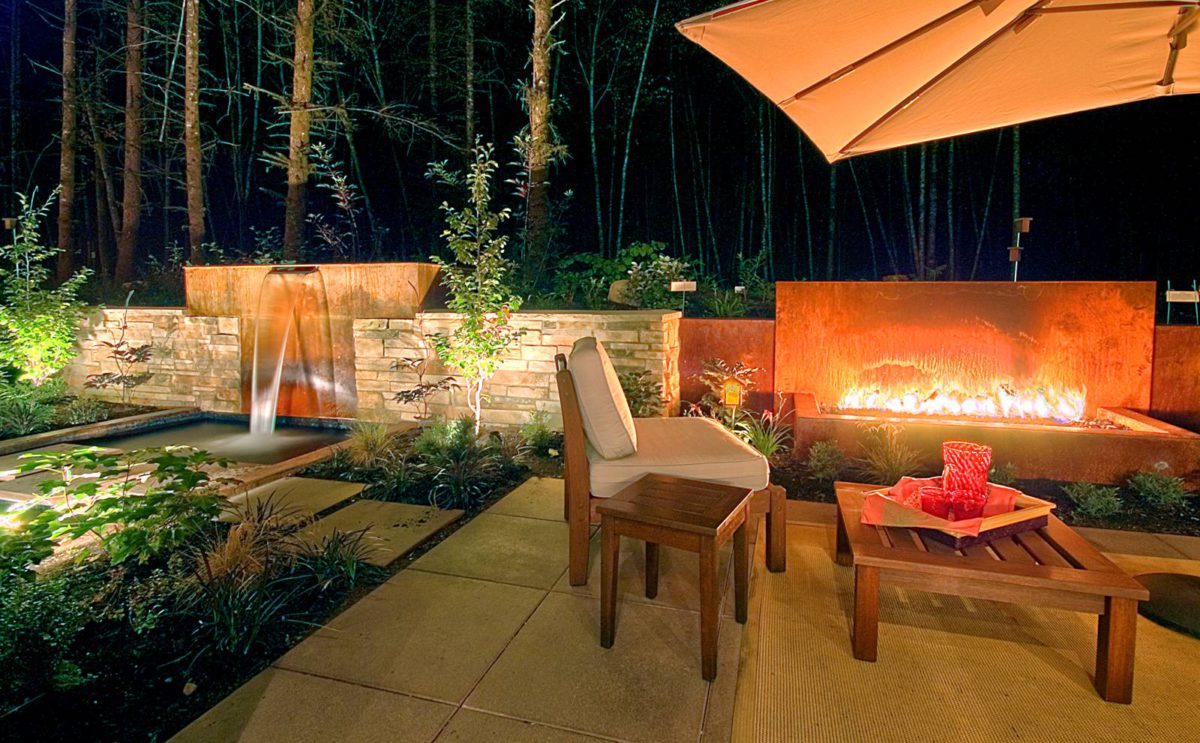
The wall of fire adds drama to the landscape. Lighting adds an additional sense of warmth.
Please contact us if you would like to explore options for a new outdoor living space. Our designers would be happy to work with you to create something that suits your lifestyle and budget. Perhaps this is the year to make your landscape a greater part of your everyday life.
We will explore more concepts from A Pattern Language in future posts.

This book might help you to create an outdoor living space, but if as a professional in outdoor decorations you ask me I would never recommends you to read any book to improve open air area. For the reason firstly information about anything is available on Internet so instead of buying the book you can set the criteria according to your place in order to get the best advice. Secondly it is a task that needs expert hands, mean it might seems easy but it is not. That’s why considering an expert can be better idea.
https://www.creekstoneoutdoors.com/